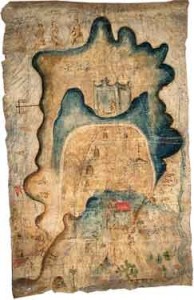“Understanding the Many Faces of Latin America through Art and History: Race, Ethnicity, and Nationalism”
Fifteen middle and high school teachers who were specially selected to attend a summer institute on the UO campus this June will get hands-on experience exploring the themes of race and ethnicity through history and art under the tutelage of a team of art and curriculum experts, including two artists from the state of Oaxaca, Mexico. Spearheaded by the UO Center for Latino/a and Latin American Studies (CLLAS) and the Latin American Studies Program (LAS), “Understanding the Many Faces of Latin America through Art and History: Race, Ethnicity, and Nationalism” runs June 23-28 at the Jordan Schnitzer Museum of Art (JSMA) under the direction of Dr. Lynn Stephen, UO anthropology professor and director of CLLAS. The institute is funded by a grant from the Undergraduate International Studies and Foreign Language (UISFL) Program, International Studies Division, of the U.S. Department of Education.

A selection committee of art, Latin American Studies, and education experts chose the teachers from throughout the state to participate in the institute. The participants include teachers of Spanish language, Spanish literature, English language arts, visual art, special education, theatre and drama, earth science, math, geography, and social sciences.
The two artists from Oaxaca, Itandehui Franco Ortiz and Cesar Chávez Victoria, will be in residence for the entire time of the institute. They will participate daily in the lectures and workshops and offer a special one-day integrated lecture and workshop looking at influences on social movement arts in Mexico and how these images can be linked to a wide range of social issues ranging from human rights, women’s rights, indigenous rights, the politics of corn commercialization and genetic contamination, youth movements, and education models.
Oregon’s population has become increasingly diverse in terms of race and ethnicity over the past two decades. These changes are reflected in more diverse classrooms, particularly through the 21.5 percent of Oregon public school students who are now Latino. The Summer Institute for Middle School and High School Teachers will provide participants with pedagogical tools, knowledge, and lesson plans to allow them to effectively transmit knowledge about Latin America to their students with a focus on art and history and thus better engage all students in their classrooms.
The University of Oregon, which has a long history of successfully providing workshops for middle and high school teachers, is engaging the expertise of faculty and staff at the Center for Latino/a and Latin American Studies (CLLAS), the Latin American Studies (LAS) Program, and the Jordan Schnitzer Museum of Art (JSMA) in a collaborative effort for this institute.
A ten-person team began meeting and preparing in the fall of 2012. Dr. Lynn Stephen assembled a teaching team of UO faculty experts including Gabriela Martínez (Journalism and Communication), Stephanie Wood (Wired Humanities Projects, School of Education), Simone Da Silva (Romance Languages), and Roberto Arroyo (Romance Languages, Willamette University) to give nine lectures. Topics include “Race and Colonialism in the Caribbean and Brazil,” “African Diasporas and Nationalism in Latin America,” Indigenous Identities and Histories in the Andes,” “Mestizaje and Nationalism in the Andes,” “Indigenous Identities and Histories in Mexico: 1400-1800,” “Mestizaje in Mexican Art and Culture,” “Transnational Currents in Latin American Arts: Mexico and Cuba,” and “The Role of Art in Chile’s Movement to Find the Disappeared.”
In addition to the nine lectures on the above topics, a team of art and curriculum experts was assembled, which includes curriculum development expert Merrill Watrous (K-12 Teacher Education Faculty, Lane Community College), June Koehler (assistant curator, JSMA), Lisa Albia-Smith (Director of Educational Outreach, JSMA), Allison and Lynne Gardner-Allers (Ph.D. candidate Education, curriculum development). The academic lecturers and team of art educators and curriculum specialists have developed a unique focus for each day, coordinating the lecture themes with specific art objects and art production techniques in afternoon workshops. For example, after learning about indigenous pictoral maps in a session on indigenous peoples in Mexico, teachers will explore amate bark painting and Mixtec and Nahua glyphs and pictoral writing techniques in the production of their own codices. One of the pictorial maps that will be used as a teaching aid is the Mapa de Mixtepec posted at the top of this article (for additional map details go to http://mapas.uoregon.edu/mapa_single_intro.lasso?&mapaid=Mixtepec).
